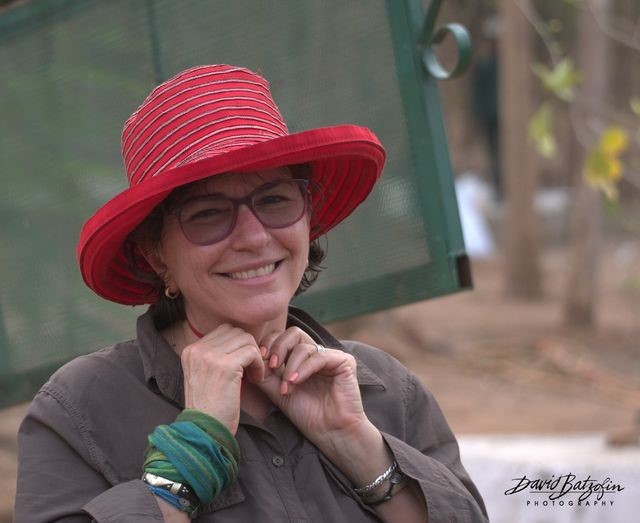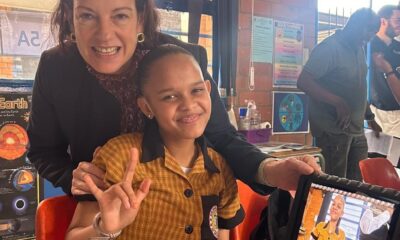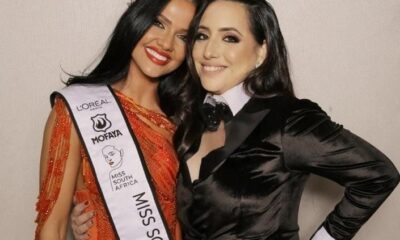
OpEds

Deaf Miss SA speaks volumes about changing norms
In a nation known for its diversity, the experiences of those who navigate the world with hearing loss often go unnoticed. But the crowning of a deaf contestant as Miss South Africa made me reflect on the strides toward inclusivity and the vital role of sign language in the context of my journey of growing up in a predominantly hearing society.
My experience may resonate with the broader struggles, triumphs, and realities faced by many South Africans with disabilities. However, I had access to private speech therapy, where I was guided to achieve speech fluency and to assimilate into the hearing world.
I faced a critical choice: to continue my education in a mainstream school or attend one for the deaf, where proficiency in sign language could hinder my opportunities for higher education. These decisions were difficult for my parents, and shaped my trajectory in profound ways.
My journey has been characterised by the interplay between my deafness and my interactions with a hearing world. I perceive “voice” as visual, not auditory.
In group settings, I must focus on one person at a time in spite of having speech fluency. I identify strongly with the term “deaf”, as “hearing impaired” suggests a deficiency, while “hard of hearing” can be ambiguous.
“Deaf” encompasses all levels of hearing loss, which in my case is within the severe-to-profound range.
This provides comic relief as I cannot hear my husband snoring – a blessing I cannot extend to him!
Navigating life in a hearing environment presents challenges, particularly when there’s little accommodation for alternative communication methods. I have had to cultivate resourcefulness to navigate these situations effectively.
A childhood of challenges
My story began when awareness of hearing loss was limited. A lack of newborn screening at that time still exists in some hospitals today. It wasn’t until I was two years and five months old that I was diagnosed with hearing loss after numerous consultations with specialists, one of whom mistakenly stated that I had “definite minimal brain damage”.
Growing up, I encountered significant hurdles in communication and learning. The only school willing to accept me was King David Linksfield. I was in large classes, and struggled to keep pace with teachers. Sacrifices were made to provide extra lessons to help me catch up on the extensive material I missed. The concentration required to follow lessons often left me with headaches, and after school, I had to attend speech therapy and do homework. Basically, a case of all work and no play!
I found myself on the periphery, grappling to connect in an environment that offered limited tools for communication such as sign language or cued speech.
Moments were marked by feelings of invisibility, especially when others struggled to understand my speech. Today, I’m seldom asked if I’m from another country or suffering from a cold.
Through perseverance, I was able to excel academically. Becoming speech fluent eventually allowed me to pursue my true passion: medicine. However, my pathway wasn’t without obstacles.
I initially enrolled in a Bachelor of Science with Honours degree, where my admission was contingent on proving my ability to cope with university-level study. During the late 1980s and early 1990s, the University of the Witwatersrand (Wits) lacked support for students with disabilities.
I made no demands for special treatment, and used my peers’ notes and additional readings to keep up. During my internship, I acquired a special pager at my own expense, which transcribed messages, to facilitate communication in a tech-limited situation.
The lack of awareness and support often led to feelings of isolation and imposter syndrome in my youth. Yet, this adversity ignited my determination to press on, proving that no challenge is insurmountable.
Today, I find it easier to communicate my needs, a task that was once daunting in a hearing world. Embracing my identity over time has been empowering, allowing me to feel more comfortable in my own skin.
The influence of Miss South Africa
The participation of a deaf contestant in the Miss South Africa pageant is a powerful affirmation of diversity and resilience. It challenges societal perceptions, allowing others to see the capabilities of individuals regardless of their hearing abilities.
Deafness remains stigmatised and seen as a limitation instead of being reframed as a unique and enriching way of experiencing the world. High-profile advocates like Miss South Africa help normalise diversity, opening doorways to acceptance and understanding.
The role of sign language
The recent acknowledgment of South African Sign Language (SASL) as the 12th official language represents a major step toward recognising the rights and identity of deaf individuals. It affirms that communication transcends spoken language, and highlights the beauty of non-verbal interactions – a simple moment of shared silence with a friend or loved one can be deeply meaningful.
SASL isn’t solely a means of communication, it fosters identity, artistic expression, and cultural community, creating a sense of belonging. For me, signing doesn’t come easily as I primarily communicate through speech. While I know a few signs, and signing feels liberating and expressive, the fluidity of SASL is something I sometimes envy.
This raises critical questions about the pressures faced by deaf individuals who strive to fit into a hearing world. There’s a fragile balance between ensuring accessibility and enforcing conformity. While mastering the spoken language can open doors in a hearing-dominated society, as my experience illustrates, it should never come at the expense of one’s unique identity or the authenticity of deaf culture.
I have worked on cultivating individual identity and community, allowing me to navigate both cultures without fully conforming to either.
I advocate for a balanced approach to fostering the needs of the deaf community in South Africa: promoting fluency in sign language alongside raising awareness among hearing individuals. This dual approach can create a more equitable society in which communication is a two-way street, fostering mutual respect and understanding.
If speech fluency is offered as an alternative, it should be accompanied by sign language education and cued speech.
Cochlear implants are another option, but finding the best solution for each deaf child should account for personal and socio-economic circumstances. One size doesn’t fit all.
For instance, a nurse once asked how her eight-year-old daughter could communicate with a deaf neighbour’s child in Soweto. After learning that the mother was unaware of the communication choices available to her child, I referred them to Hi Hopes, a local organisation that offers support and guidance around children with hearing loss. Hi Hopes sent a parental advisor to evaluate the family’s situation, and determined that sign language would be the most effective mode of communication for her child.
This decision opened a world of connection for both the child and her mother, as well as inspiring my colleague’s daughter to learn SASL.
Changing attitudes toward deafness takes time, and opportunities like the Miss South Africa pageant provide the forum to highlight stories and spark conversations that lead to meaningful change.
Workplaces should foster inclusive environments that allow deaf individuals to flourish. This involves providing sign language interpreters – the Wits Centre for Deaf Studies offers training courses – producing material in accessible formats, and nurturing a culture of inclusion. Although some advancements have been made, they remain rare.
Being different doesn’t equate to being any less. The journey toward inclusivity requires a collective effort from all South Africans, deaf and hearing, enabling everyone to thrive in meaningful and authentic ways.
- Dr Carolyn Fedler Batzofin is a chemical pathologist at Ampath and a keen ceramicist and cat lover. She has a Bachelor of Science with Honours cum laude, a Bachelor of Medicine and Surgery, a Post-graduate Masters of Medicine, and a diploma in Palliative Medicine, She is also a fellow of the College of Medicine in Chemical Pathology.










